- Accueil
- Base de données
- 22
- 31st October 1943
31st October 1943
North American Mustang Mk IA FD554 (code N)
Saint Méloir des Bois, "Champ du bois de Couavra" (22)
(contributor : Pascal Lebigot)
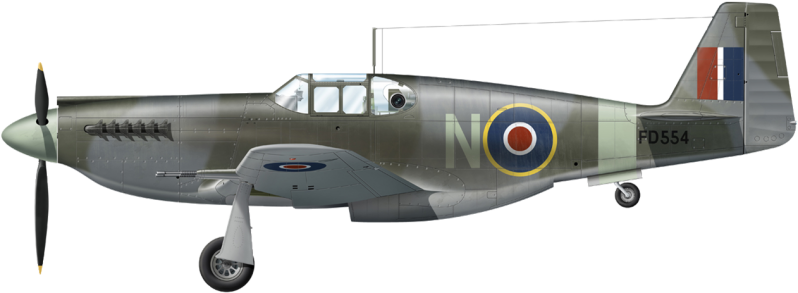
© Jean-Marie Guillou
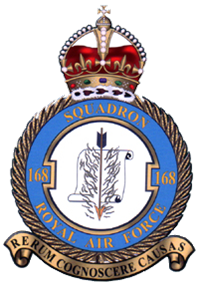
"Rerum Cognoscere Causas"
"To know the origin of things"
168 SQN Royal Air Force
Pilot (Norwegian) : Second Lieutenant Jan Gert VON TANGEN
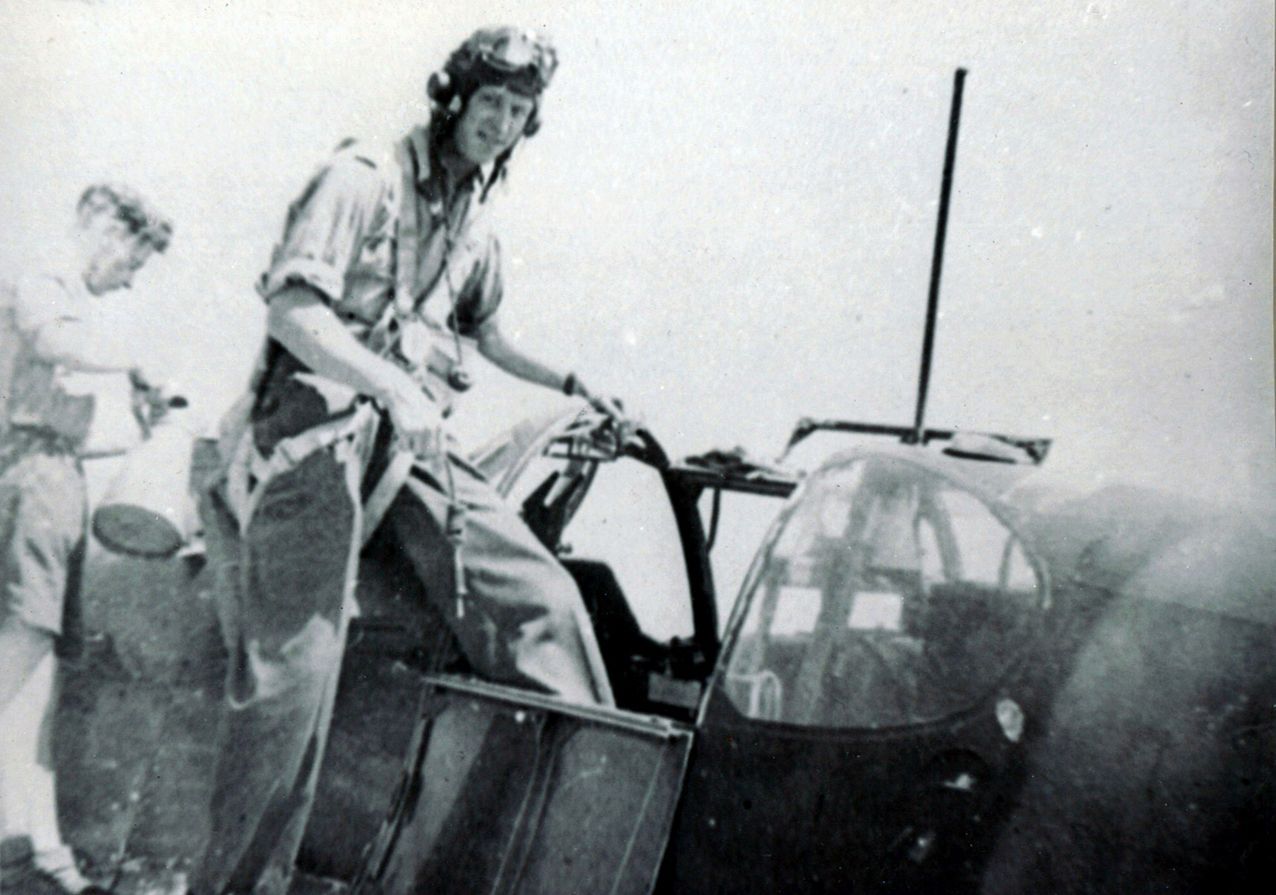
Fenrik (Second Lieutenant) Jan Gert VON TANGEN, 26 yeras old
Body repatriated to Vestre Gravlund, Oslo, September 9, 1946
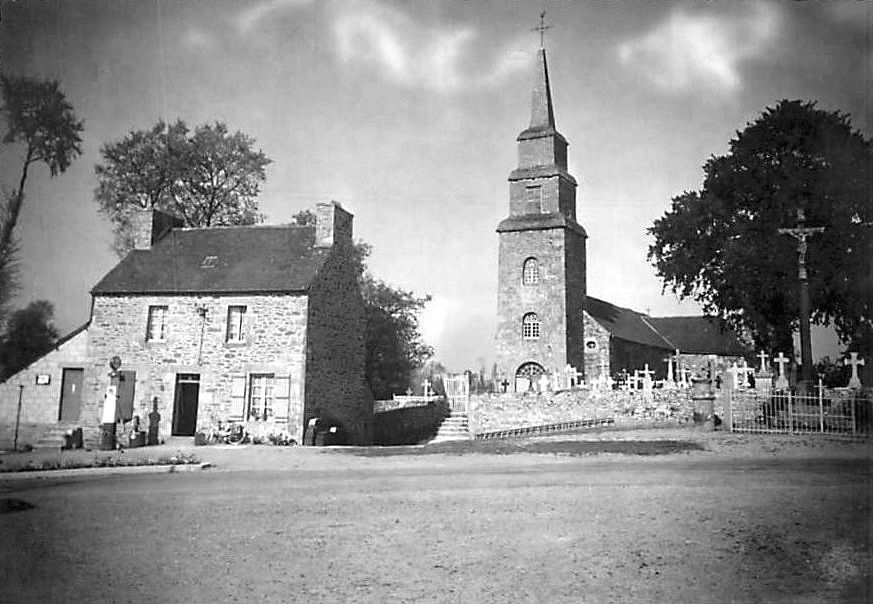
"Saint Méloir des Bois" in the past
Commemoration of 23/11/2013: "The wings of Lieutenant von Tangen" (french language) - Film directed by Bonnie & Clark Productions
THE STORY
Sunday, October 31st, 1943. Saint Méloir des Bois. "Champ du bois de Couavra". Crash of Mustang Mk IA FD554, flown by 2nd Lieutenant ("Fenrik" rank in the Royal Norwegian Air Force) Jan Gert von Tangen.
This Norwegian pilot, a volunteer of the Royal Air Force reserve, joined on 25 August 1943 the 168th Squadron of the 2nd TAF (Tactical Air Force). Jan Gert von Tangen came from Old Sarum base in Wiltshire near Salisbury, where the Tactical Reconnaissance Training School of the 41 OTU (Operational Training Unit) was located.
The 168th Squadron of the RAF had been formed at Snailwell near Cambridge, England, on June 15, 1942. In June 1943, it reached the base of Odiham in Hampshire, where it became operational with the Mustang Mk I (P-51 Mustang american fighter designed by North-American Aviation) for reconnaissance and attacks missions on enemy territory. The pilots of this unit came from the Commonwealth countries, or occupied countries that these young men left at the beginning of the war, but also from countries fighting against the Axis forces. Often with a desire to fight for freedom, they committed themselves for the duration of the war. We also find this youth in the expression of an adventure dream. But unfortunately, the strength of the fights was forever destroying their illusions and unfortunately for many of them, their lives.
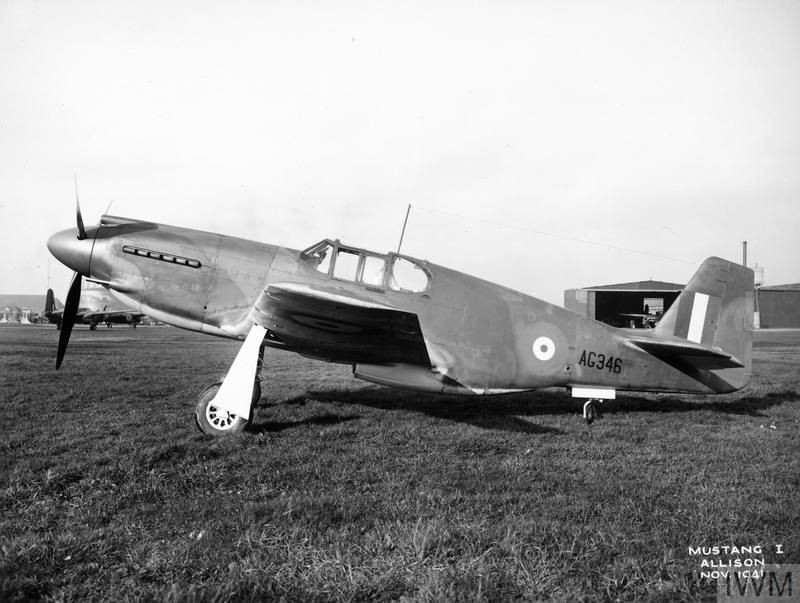
Mustang Mk I, AG346, Speke Airport, Liverpool. This aircraft was affected to No 225, 63 and 26 squadrons of the RAF, then to No 41 Operational Training Unit. In 1944, the AG346 returned to operations with no 16 and 168 Squadrons of the RAF, 2nd Tactical Air Force, before being finally shot down by the Flak near Gacé, in France, on August 20, 1944.
© IWM (ATP 10680C) ?- public domain
In July 1943, the Squadron reached the base of Thruxton Hampshire (about 60 miles south-west of London) to operate a general mission of investigation of the French northern territory by taking photographs of important strategic sites such as bridges, buildings, airfields, harbors... but also reconnaissance missions called '' Rhubarb '' with target decided by the leader of the group or missions with precise targets decided in advance by the headquarters. 7 months before the Operation Overlord, missions became frequent, leading pilots to make several reconnaissances per day depending on the weather. It was necessary to attack intensively the enemy and to know perfectly well where it was located on the occupied territory, in order to destroy it and avoid its movements. The Mustang Mk I and Mk IA were specific bomber-fighters made in the USA by North-American Aviation (facilities in Inglewood, California and Dallas, Texas) and delivered to the British via a financial lend-lease system. They were allocated to No 26 Sqn in January 1942, then No 2 and 16 squadrons in April, and later to No 4, 63, 169, 239, 241, 268, 309 (Polish), 400 (RCAF) and 414 (RCAF) squadrons. This specific single-engine fighter had the particularity of being equipped with an oblique photographic system (1 or 2 K24 cameras) located just behind the pilot's headrest and which allowed to take and bring back to the base 5 very precise snapshots of strategic targets discovered during the flight.
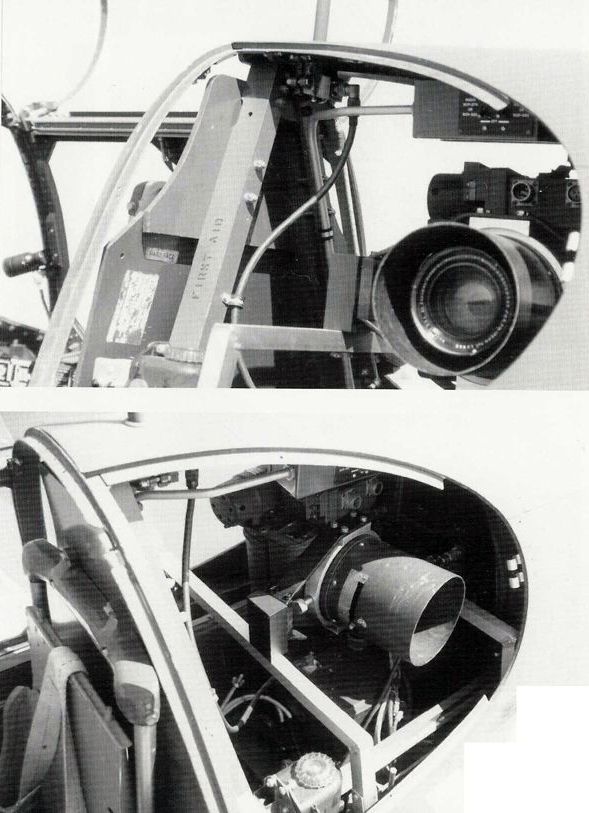
Photographic equipment of the Mustang Mk 1A
In addition, the aircraft was equipped with a gun camera (cine-machine gun) coupled to the guns. The triggering of shots started this camera installed on the left wing. It was thus possible to watch an attack when returning from the mission. The Mustang IA, on request of the British, was equipped with four 20 millimeters guns, Hispano Suiza, which gave it a lot of power. Moreover, its Allison V 1710-87 1250 horsepower engine, with 12 cylinders in V, gave it a great performance and allowed a max speed up to nearly 600 kilometers per hour. The tare weight of the aircraft was 7,000 pounds which was increased by the weight of the fuel (large tanks), ammunition and sometimes a 550 pounds bomb under the aircraft (which was not the case during the mission of second lieutenant von Tangen).
On Sunday October 31, 1943, at 3 pm (English time), Flying Officer Desmond Alan Cliffton-Mog (see biography) took off from the Thruxton base aboard his Mustang IA RN488. He was taking off with 2nd Lieutenant Jan Gert von Tangen, who also flew a Mustang IA, registered FD554 and coded N. Both of them knew each other well enough and had just completed several missions together. Missions that went smoothly, all over British territory. They left this time for a photographic reconnaissance called "Poplard" ; it consisted in leaving one of the two airmen during the shooting to look for a possible attack of the enemy fighters, leaving the other one to operate in safety. They were ordered to take photographs of the viaducts and bridges between Le Vivier sur Mer in Ille et Vilaine and Evran in the Côtes du Nord (at that time), these two cities being located in the north of Brittany. This mission was supposed to bring back photos of the major infrastructures located on the main roads and railways of this region, and mainly the Dinan viaduct at the southern tip of the Rance estuary.The shooting capacity was 250 shots per camera.

Boitier de contrôle de la camera
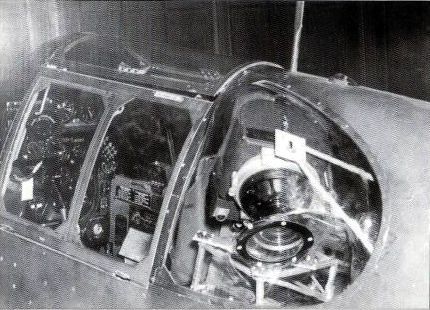
Camera K-24 in Mustang
Photo © USAF - public domain
At the beginning of the flight, they met two other Mustangs IA from 268th Squadron, based at Odiham in Hampshire and flown by lieutenants Lambert and Smith. They did not have the same mission but simply joined them to cross the Channel together and then separated in two groups. They climbed at high altitude towards the city of Roye in the Somme where they went down at low altitude, took care to avoid anti-aircraft artillery and took photographs the railway line Paris-Lille.
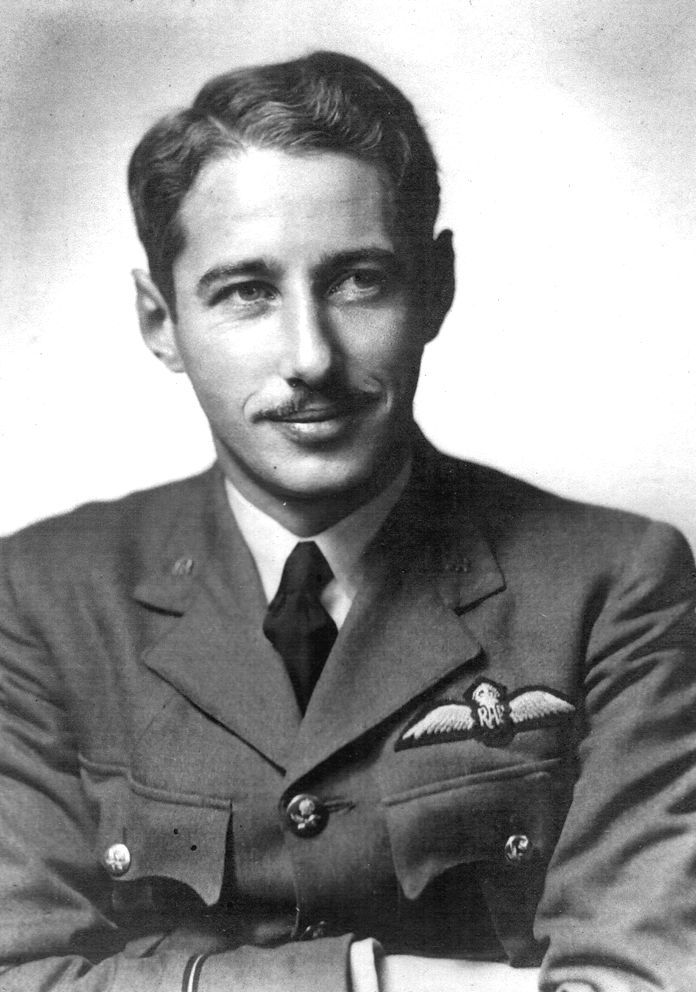
Flying Officer Desmond Alan Clifton-Mogg
The 4 Mustangs flew together. Lieutenant Cliffton-Mog, who was the leader, indicated the direction to his teammates. All four were under the orders of Flying Officer Trevor Eyre Drew Mitchell of No. 268 Squadron who gave them their personal missions. They headed for Portland Bill Island and its lighthouse erected at the southern tip. Portland Bill was south of Weymouth, Dorset County, England. The flight was done in good conditions. The weather was favorable. The 4 airmen flew 5 miles from the west coast of the Anglo-Norman island of Guernsey. They had to avoid anti-aircraft defenses that the Germans had installed in large numbers on the seafront. Very quickly, the northern Breton coastline appeared on the horizon. The group was now heading the Verger beach at the north of Cancale, Ille et Vilaine, while gaining altitude to avoid possible enemy fire. As expected, the group split in two and the airmen communicated by radio and flew towards their personal goals. Lieutenants Cliffton Mog and von Tangen immediately dived on "Le Vivier sur Mer" where they targeted the bridge called Pont d'Angoulême which was crossing the river coming from the Dol marsh and going towards the sea on the coastal road. They took a photograph and then went to Dol de Bretagne and continued towards Dinan where they flew over the huge viaduct, which they made several shots.
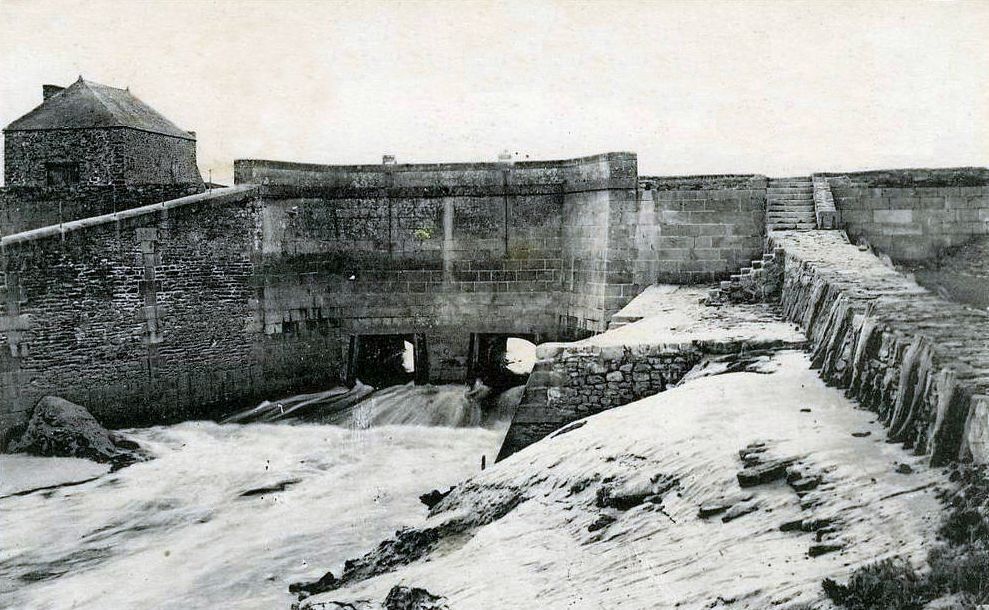
The 'pont d'Angouléme' at 'Le Vivier sur Mer'
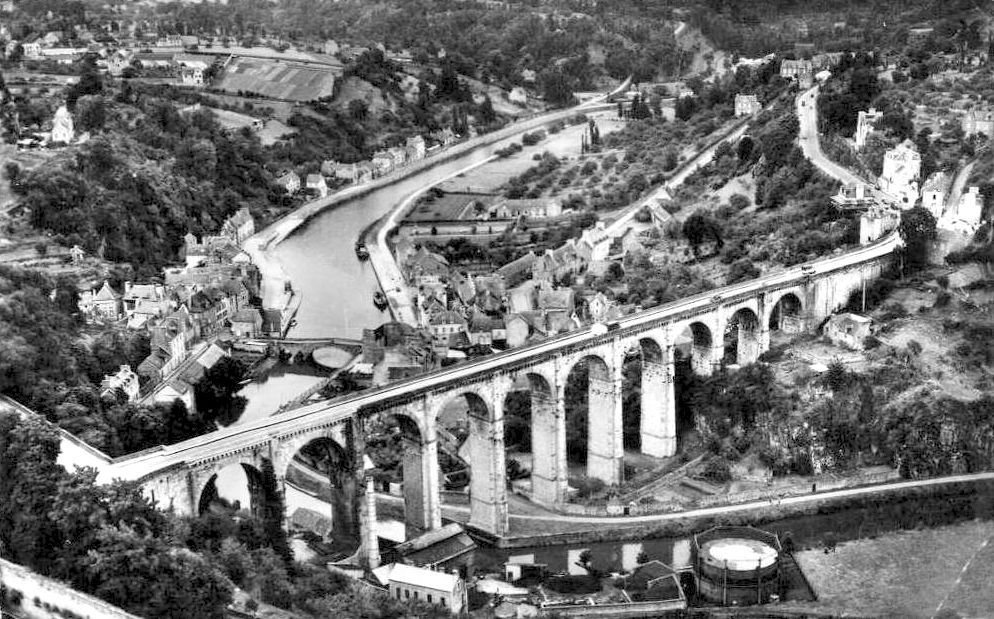
The viaduct at Dinan
The mission ended and the return was about to start, to the west first, then north. They left England one hour ten minutes ago, when suddenly happened the tragedy. Lt. Cliffton Mog wrote in his mission report : "everything was going well. Our mission was over. We flew at a medium altitude, when suddenly, at 6 miles west from Dol (he made a mistake, we must understand Dinan according to the crash location) I saw the plane of my teammate the 2nd Lieutenant von Tangen making a very tight turn, diving to his left, loosing rapidly altitude, and crashing on the ground in a meadow. Everything happened so fast. It was 4:15 pm. I was very surprised by this sudden drop. We did not have any enemy fighters around us. He did not send me any radio message. On the ground, I did not see any anti-aircraft defense position or any firing. If there had been any, I think I would have been targeted as well. I did not understand what happened. I did not notice anything. After flying over the area of ??the crash, I decided to return immediately and headed to the eastern edge of Cape Fréhel, and then headed to my base, Thruxton, where I landed at 5:20 pm. 2nd Lieutenant von Tangen has been declared missing.
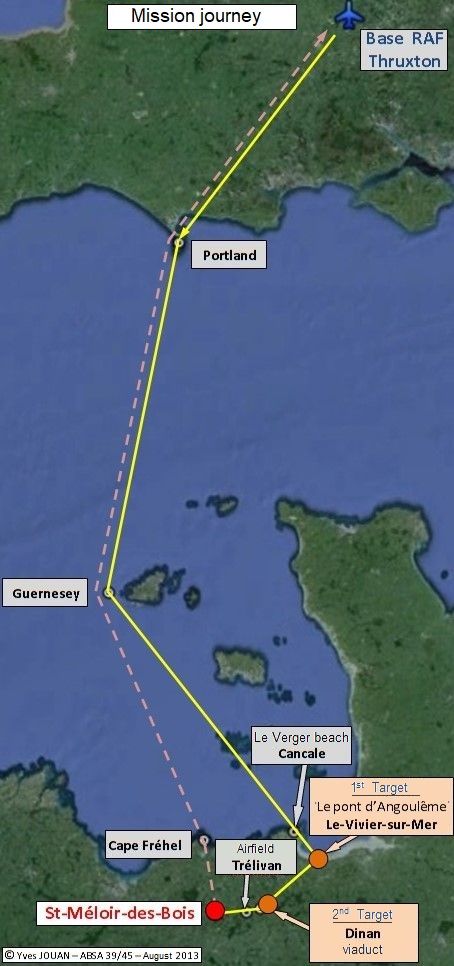

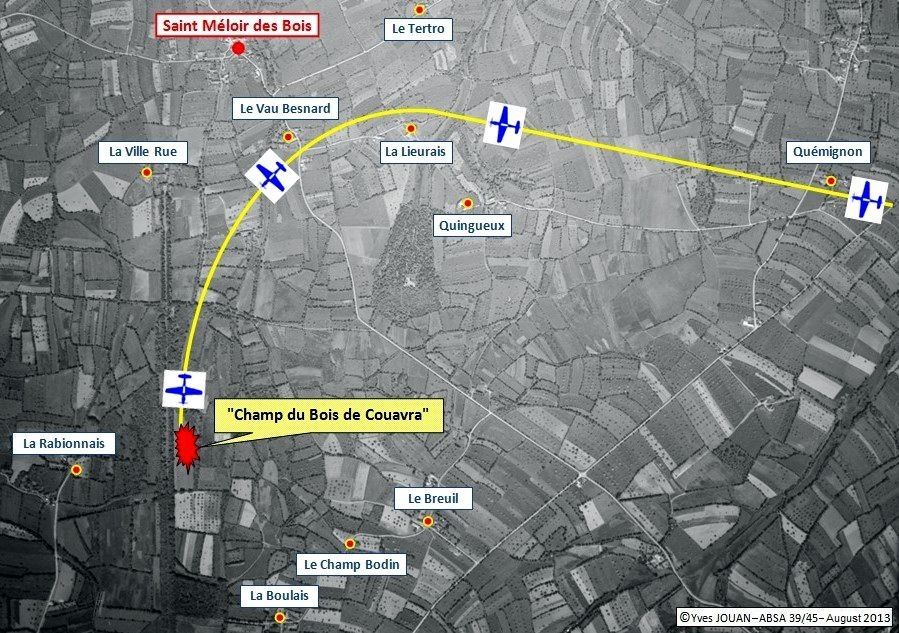
2nd Lieutenant von Tangen dide in this accident. He was 26 years old, born December 6, 1917. It was his first mission over the occupied territory. He had participated in several missions to England, including a test flight on October 22, 1943, with Lieutenant Cliffton Mog, which goal was a gas consumption study for the Mustang. Flight that was achieved over a distance of 1000 kilometers. Three days later, on October 25, he took off early in the morning for a hour-long photographic reconnaissance mission over England. He was flying that day with Lieutenants Cormack and Hussey.
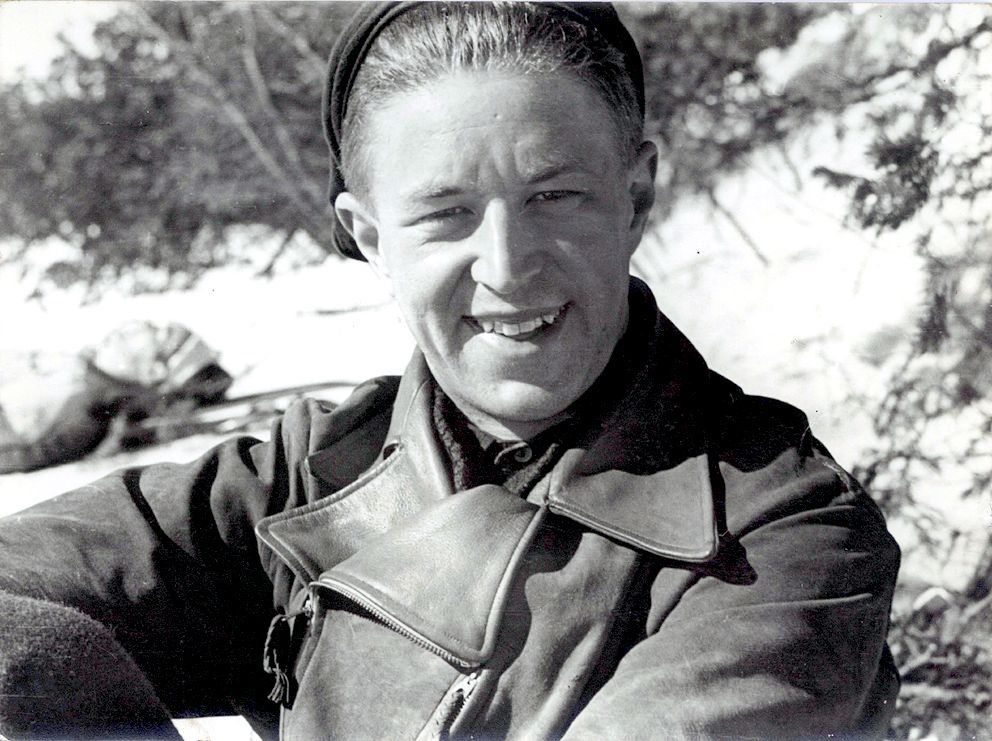
Photo taken at Toronto, Canada, during his pilot training
The origin of the crash at Saint Méloir des Bois, located in the Côtes du Nord (at that time), has never been elucidated. Both airmen had been granted a 7-day leave from October 2 to 9, 1943.
JAN GERT VON TANGEN LEFT NORWAY.
As part of Operation Weserübung, which aimed at the invasion of Denmark and Norway, the Germans wanted to control the much-needed Swedish shipping of steel. The deployment of the German army to Norwegian territory began on April 9, 1940. On June 10, Norway was occupied, the country surrendered, the king and his family went into exile. Because of this dramatic situation, and refusing this occupation, a part of the population immediately decided to leave the country or organize the resistance. Some had already joined the UK in previous months because of events in Europe. They decided to reach the harbours of the East coast of England by the sea, the only possible goal and the only nearby territory that remained free despite Hitler's assaults which fortunately never succeeded this invasion. Very quickly, multiple networks of escape by sea were organized from Norway. Some already worked very well for several months. The crossings were very random because it often took 2 to 3 days, with uncertain weather conditions in a rough North Sea. Some escapees suffered a tragic fate. Catched by the German Navy, they were brought back to Norway. Unfortunately, they were often sentenced to death or deported to Germany. Others were lost at sea, during the sinking of their boat.
On March 30, 1941, the fishing vessel named "Bovag" (registered M146G), belonging to Mr Vardseth, was in preparation for a nocturnal escape. It is anchored in front of the harbour of Alesund, a Norwegian harbour town located 230 kilometers north of Bergen. At nightfall, 12 men discreetly reached the ship aboard a small boat. All were candidates for departure. There was Jan Gert von Tangen, who also refused the tragedy of his homeland. He wanted to participate actively in the reconquest of Liberty for his country, so he was part of the group and wanted to fully engage in this fight. After a smooth crossing of about 50 hours, the boat arrived in Lerwick harbor in Shetland Islands on April 2, 1941.
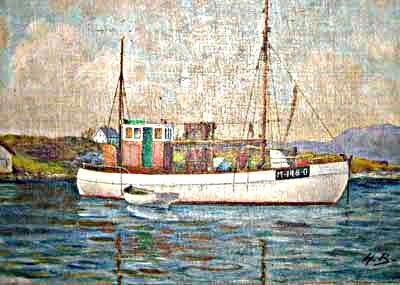
The "Bovag"
The painter of this artwork is Mr Harald BLINHEIM
and the owner Mrs Arne VADSETH
''Norvegian merchant fleet'' 1939-1945
The fall of this plane this Sunday, October 31, 1943 in Saint Méloir des Bois remains enigmatic for the witnesses that we met. The question asked '' why the Germans did arrive so quickly that day on site, in such an isolated place ? "We have to put this event in the context of this day. Indeed the Germans were numerous in the region that Sunday. They arrived early in the morning, a column came from Dinan for reinforcement and searched in the area in several towns looking for resistants. The reason for this important operation was the death of a soldier vaguemestre in the Vlassov army, whose body was found in a hollow road near the road Bourseul-Plancoet on Saturday morning October 30, 1943. This Sunday, October 31 at Bourseul, the occupier encircled the town and operated more than a hundred arrests among the population. A hundred hostages were kept 24 hours in the village school and were transferred on Monday morning, November 1, to Dinan, but were released the next day late in the afternoon. Both events took place on the same day and it is impossible to conclude that the fall of the Mustang of Sub-Lieutenant von Tangen was due to this German presence.
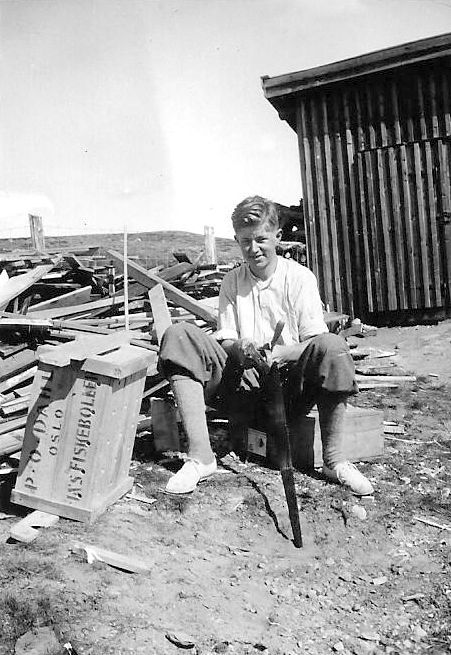
Jan Gert von TANGEN young.
TESTIMONIALS
Mrs Odette Buard.
It seems to me that this was happening on All Saints Day, 1943, during the afternoon. We were at a religious ceremony in Saint Meloir's church, when suddenly we heard a loud noise, and then nothing. It was war. We all wondered what was going on. At the exit of the office the news spread, a person said that a plane had fallen near the 'Ville Rue'. We lived in this village. We returned home quickly. In fact the aircraft crashed in the forest of "Couavra", not far from home. The Germans were already in the area. My mother decided that we would go looking for our cows by little ways to be safer.
We learned the next day that the Germans when arriving on site had arrested all the young people who had gone there. There was also an adult in the group. They were taken to Dinan, kept for several hours and released the next day. It was then impossible to go to the scene because the German soldiers guarded the place. Three days later, late in the evening, Joseph Hervé was requisitioned by the Germans to recover with his horse and his cart, the body of the unfortunate pilot remained on the spot. It was said that he was an Englishman. I also remember that the farmer had his flashlight. It was dark when the cart arrived home at the city street. The men brought the coffin into our house and laid it on one of our benches. We did not see the pilot's body because a cloth covered him. A second coffin had been planned but did not serve. The top was screwed. The Germans attended the scene. At the end, some of them suggested drinking something before leaving. My mother served them a small glass of alcohol. The coffin was taken out and put in a German car. We had not known where the occupant had buried him. In the days that followed, the Germans removed the remains of the aircraft. At the site where he had crashed, there was a large hole which was later closed.
Mrs Lemenager Marie.
We lived in the village of "ville Bagot" in Bourseul where my parents were farmers. It was a Sunday afternoon around the end of October 1943. My father François Delamotte, 39 years old, was outside when suddenly he saw an aircraft falling. Without telling our mother, he decided to go to the scene immediately. He went in this direction, towards Saint Méloir des Bois and arrived first on the spot but could not do anything for the unfortunate pilot who died in this accident. The Germans arrived later, arrested him, ordering him to stay there. At home we were worrying. My mother kept saying '' but where did he go ? Maybe he was killed ? ". We did not know anything about the crash of the aircraft. We were stressed all night long, and early in the morning, the next day, we saw Mr Olivier, living in the village of "Breuil" in Plélan le Petit. He explained to us that my father had been arrested by the Germans and kept in Dinan with his son and four other friends. He also said that we had to wait for news. We were all worried. Daddy and the other young men came back the following afternoon. They had been released, and it was Monsieur Fleury's father who drove them back with horse-drawn vehicle. Daddy had bought some bread when going close to the Aublette bakery at the exit of Dinan. They were all very hungry. Dad's return home was a great joy, I was 15 years old.
Mister Olivier Albert. Plélan le Petit
I lived in the village of "Breuil" in Plélan le Petit and during the afternoon of Sunday, October 31, 1943, eve of All Saints' Day, I knew by some friends that an aircraft had just fallen not far from home. I immediately decided to go there alone. After walking through the campaign that led to the accident site about 800 meters, I walked discreetly behind a slope and from there I saw a man standing near the wreck of the destroyed aircraft. The aircraft was stuck into the meadow ground along the path. It seemed to me that this man was not alone, I could not distinguish who was with him. I did not insist and returned home, to the village, where I met other friends who asked me to take them there. So we went back to the place of this accident located in the town of Saint Méloir des Bois. Our group consisted of Pierre Fleury, 13, Victor Réhel, 19, Marie-Ange Fairier, 14 and Emile Benoit, 15 and of course myself as their guide. We all lived in the village of "Breuil". I was 16 years old.
My friend Pierre Fleury had with him his dog named '' Coco ''. Arriving near the embankment, we were cautiously advancing when suddenly several Germans came to shoot in the air except one who shot the poor dog down on the embankment. It was a total surprise. We did not expect that. We were very scared. The Germans made us raise our arms in the air. They took us to the meadow, not far from the remains of the aircraft and there they made us lie down on the ground, face down. We had recognized Francois Delamotte who was arrested before us. It was him I had seen during my first visit to this place and probably already guarded by one or more sentinels. Older than us, he was about forty years old. He has also been obliged to lie face down on the ground. I must say that before that, we had a body search and on me they found brass wires with which I sometimes put snares to catch hares. These wires were prejudicial to me and I was interrogated closely in Dinan.
For a long time, we were lying on the ground of this meadow and it was not hot. The rain began to fall. We were soaked and the night was beginning to come. When night fell, the Germans made us stand up. They took off my belt. And under a good escort, we left in this muddy path that webt to the village of Saint Méloir. I kept losing my pants. After having traveled a distance that seemed very long, we were directed to the courtyard of the castle of the Ville Rue. In a corner of this courtyard, all six of us were again ordered to lie on the floor, still face down. The soil was very wet and the rain had stopped falling. We stayed there for about an hour. Then the Germans put us in a truck. Armed soldiers were among us. We were taken to the guard post of Kommandantur at Dinan.
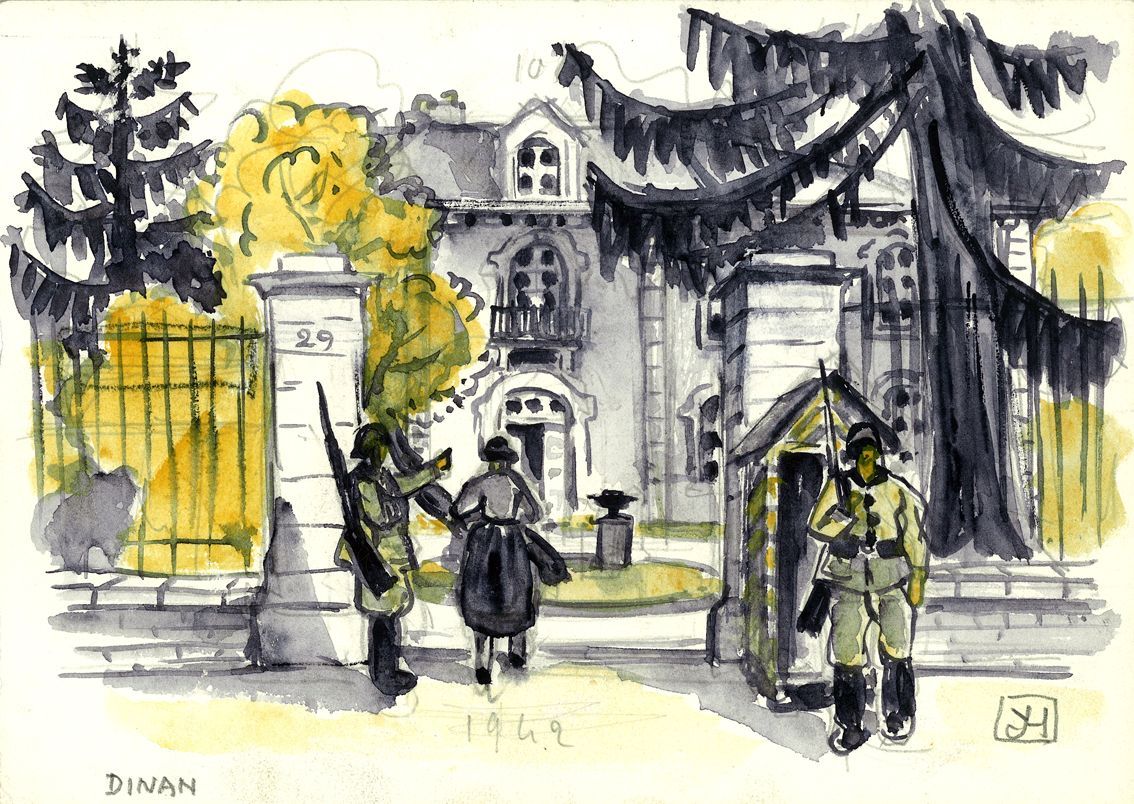
The Kommandantur at Dinan was located at 29 "Rue de Brest"
«Coll. Musée Yvonne Jean-Haffen - Maison d’Artiste de la Grande-vigne-Dinan».
The title of this artwprk is "1942 : visite à la Kommandantur" (visit at the Kommandantur) - Number DG.55
We went one by one to the interrogation. Mine was muscled by the fact that I had these copper wires on me, the Germans had many questions about it and wanted to know what they were for. I did not tell them anything. I received violent kicks in the buttocks. City agents came to pick us up and took us to the police station at the town hall. I also remember that one of the German officers spoke our language well. The next morning, six French city agents drove us back to the Kommandantur for another interrogation. We had not eaten anything since yesterday. At the police station, we were treated to a coffee with a piece of dry bread. Our arrest had moved the people. The Mayor of Plélan le Petit, Mr. Joseph Lefort, contacted by the Germans, vouched for his person declaring that we were not terrorists as the Germans thought. We were released late in the morning. Mr. Pierre Fleury, our friend's father brought us back in his car on horseback. At Martin's bakery at "Aublette en Quévert", we could eat a piece of bread bought by Mister Delamotte who had a little money with him. This sad moment has remained in my memory forever.
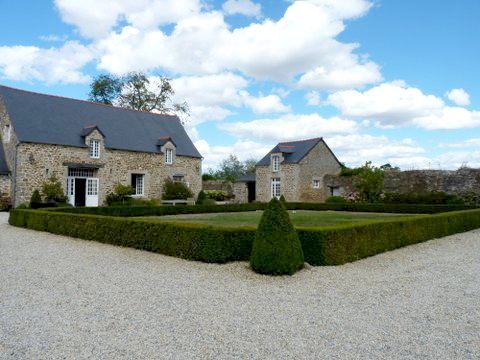
It was in this courtyard of the 'Malouinière' in 'la Ville Rue' that were kept
the 6 young men before their departure towards the Kommandantur of Dinan
Mister Pierre Fleury of Plélan le Petit.
This Sunday afternoon, I was in our fields near the village of Breuil in Plélan le Petit where we lived. I kept the cows. In addition to the herd, I had with me my dog ??named "Coco" A big black dog, faithful companion who followed me everywhere. During the afternoon, I saw in the distance in a clear sky, in the direction of Dinan, two aircrafts that were describing big curves, going up and down. It lasted a few minutes. I thought that these airmen were fighting. We were at war. From where I was I did not hear any noise. Then nothing and I did not see them again.
In the late afternoon, I returned home with my herd. Some friends came to tell me that an aircraft had fallen not far from home and that they planned to go to the scene. A neighbor Albert Olivier knew where it was. So we left together. There was 19-year-old Victor Rehel, 14-year-old Marie Ange Fairier, 15-year-old Emile Benoit, 16-year-old Albert Olivier, and myself, the youngest, 13 years old. We traveled the countryside about 8 to 900 meters. As we approached the meadow where the aircraft had fallen, we progressed cautiously. When we got to the embankment, the Germans, who had probably heard us, came out and started firing in the air except one who shot my dog ??as he reached the top of the embankment. We were very scared. A group of comrades who followed us hundreds of meters behind us, hearing the shots, ran away. The soldiers asked us to move towards them and to put our hands up. They searched us and made us lie on the floor, face down. They had already arrested François Delamotte who had visited the scene, just after the fall. We heard them talking, not understanding what they were saying. They were numerous. An old man who passed with children in a path at the end of the meadow was arrested. After much discussion, they let him continue on his way with the children. It semt that this man was Monsieur Latimier coming back from Plélan le Petit. I heard but did not see the scene as I was lying on the floor. Our position was uncomfortable because of the humidity on the grass, knowing that the rain had started to fall heavily for a while. Night was coming. We received the order to get up. We reached the side of the field and then began a walk towards Saint Meloir.
It was dark and the rain was still falling. We were the day before All Saints' Day. I remember losing one of my shoes in the mud of the road. I had to finish this way of more than one kilometer which took us in the courtyard of the castle of the 'Ville Rue'. We were all six in a corner of this courtyard. The Germans ordered us to lie down again on the ground. It was very hard to live. After a long time, they told us to get up and get on a truck. The truck started after armed soldiers climbed with us at the back. The German officer who had ordered our arrest was up front with the driver. This officer was very tall, dry, very rigid. We did not know where they were taking us. After a good half-hour trip, the truck stopped at the Kommandantur of Dinan located rue de Brest. We got out and we were taken to the guardroom where we were seated on benches near the wall. One by one we were questioned. One of the officers spoke French. This officer came to speak with the man who had arrested us. The tone was very high. We did not understand what they were saying but we knew that it did not please the Commanding officer. The latter ordered the officer, in a very firm tone, to stand to attention, facing the wall. He remained like this throughout our interrogation. He was probably reproached for having done so. After this interrogation, we were escorted back to the guardroom. After a long time spent in this sinister place, 6 agents from the Dinan police station came to pick us up. They handcuffed us to each of us. The German officer speaking French, seeing me handcuffed, immediately ordered that remove handcuffs for me only. We walked and reached the police station at the town hall. It was late. We were hungry. Placed in a room, we slept lying on the floor. It was very hard.
The next morning before going back to the Kommandantur for another interrogation, we were given a coffee. I still had only one shoe and a policeman brought me a pair of slippers. My interrogation was difficult because the officer who interrogated me suddenly put his pistol on my chest. I was very scared. Did he want to impress me? I did not know. The Germans contacted the mayor of Plélan le Petit about us. The latter had vouched for us, certifying that we were not terrorists. The officer spoke to us, telling us that we would be released and that we could go back to our parents. Indeed our release was effective late in the morning of Monday, November 1, 1943. We left all 6 walking up the Brest street, towards Plélan. Passing the Martin's bakery at 'Aublette in Quévert', Mr. Delamotte bought bread. He had money left in his pockets. This comforted us because we were very hungry. Our group left, still walking, on the road towards Plancoët because it was forbidden to pass near the aviation camp, where the roads were kept. We took the direction of the village of Aucaleuc. After crossing it, we headed for the Dinan Lamballe road.
My father had been warned of our release and decided to go a long way to meet us. He had taken our horse drawn carriage. Arriving on the the mount of Vaucouleur, he stopped on the side of the road, when seing us in the distance. It was around 2 pm. Our horse began to neigh all the time as we walked the distance that separated us from him. I stroked it when arriving and he stopped his neighings. It was a beautiful Breton postman horse, very fine that we called "Blond", due to the color of his skin. I have always thought of this, finding his reaction very curious. We all got in the car. At Plelan, we passed the church where people were returning to the vespers of All Saints day. We were very happy to find our village and our families. In the days that followed, the Germans came to dismount and recover the wreck of the aircraft. With a friend, always excited by curiosity, but at a distance, we climbed one by one in an apple tree to see what they were doing. We had been alerted by the sounds of the hammers striking the metal parts. To fill up the hole caused by the crash of the plane, they requisitioned men from the neighborhood. One of them was my cousin Joseph Haquin who later told me that he had buried my dog's body in the hole.
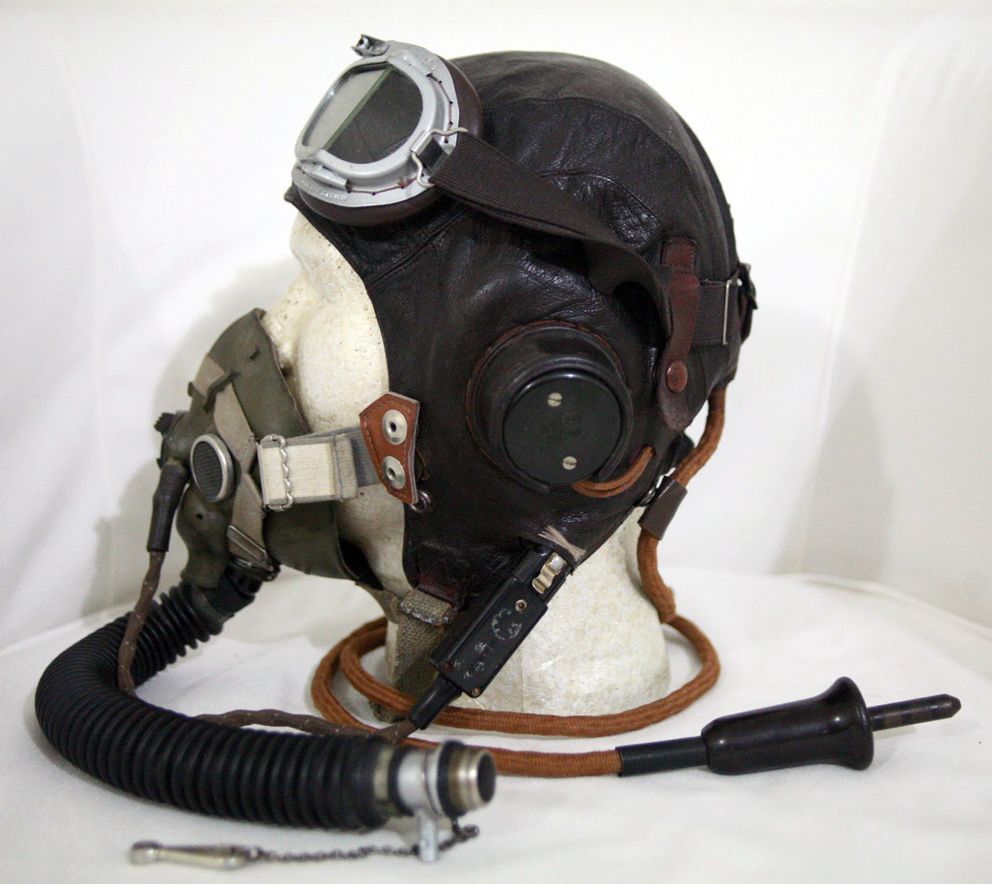
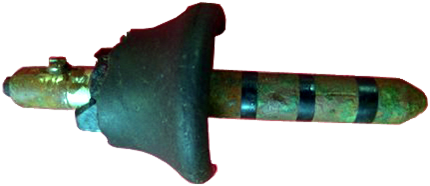
The jack plug of Jan Gert's helmet was found on crash site
The mission report of Lieutenant Cliffton Mog who, we must remember, was his teammate, did not mention any shots they would have been targeted at, having himself viewed the site of the crash of his friend before making the decision. to return to his base. A new element was reported to us by Mr. Robert Buard. His father said that he had seen, this Sunday in October 1943, this aircraft which flew at low altitude near the village of "Tertro" in Saint Méloir des Bois and which left behind a trail of smoke. "This one will not go far" did he think. Another testimonial was reported by Mr. Joseph Jouffe indicating that this Sunday afternoon of 1943, he kept the cows in a meadow of the village of " La Lieuraie ", and that at that moment, he was talking to his aunt, Marie Jouffe, when suddenly they saw an aircraft flying overhead, flying low towards the wood of the " Ville Rue ". Immediately after they heard a loud noise caused by the fall of this aircraft. In the late afternoon, the Germans arrested six young men who had gone to the crash site. Today according to the researches done on the fall of the Mustang of the 2nd Lt. von Tangen, we can formulate the hypothesis that this airman would have been mortally wounded when he passed near the Dinan-Trélivan airfield.

The Mustang before its fall crossed the airspace between the villages of Lieurais and Tertro.
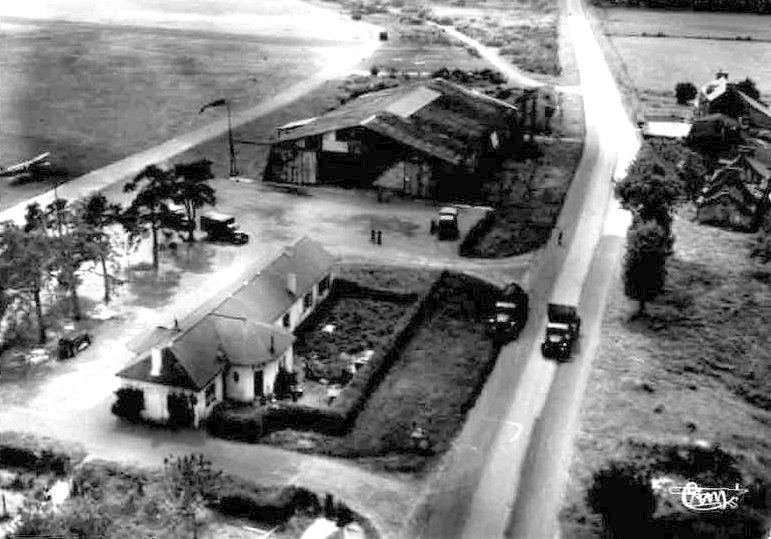
The airfield of Dinan Trélivan before the war.

The airfield of Dinan, and between the soldier and the background, an anti-aircraft gun.
From July 1943, this airfield of second category, codified B 28 XII (headquarter in Laval) was occupied by the 1st and 3rd section of leichte Flak Abteilung 912, which had 6 units of 20 mm denominated Flak 30 or 38. The staff was 63 men, to which could be added the 77 soldiers of Fliegerhorstplatzkommando B 28/XII, who were equipped with 5 heavy machine guns. Probably informed of the presence of Allied aircrafts on Dinan, the servers of these pieces of artillery were quickly in alert to their firing point. The aircraft left a trail behind him. It was not smoke but the tank of glycol (coolant) pierced by the shells (see testimonials on the Mustang P-51 hit near Morlaix (29), August 9, 1944) had started to leak, and with the speed left this trace behind him. The high-capacity glycol tank was placed under and behind the cockpit, ventilated by a well-visible air vent below the Mustang. If there had been a fire in the engine, during the crash, the whole aircraft would have caught fire considering the volume of gas remaining in the tanks.

It was not the case. 2nd Lt. von Tangen did not give any message. In the same case, when they were hit, the airmen warned their teammates and immediately took altitude to be able to eject from their cockpit and jump in parachute. Unfortunately this was not the case for the Norwegian aviator. The aircraft in distress thus flew about ten kilometers. The leader did not realize this brief attack as he was flying further north about 1 mile from his teammate. 2nd Lieutenant von Tangen was buried by the occupant on November 3, 1943 in the English square of the Dinard Cemetery. They reported his death and burial place to the International Committee of the Red Cross. In early September 1946, a Norwegian Royal Air Force delegation accompanied by the pilot's mother went to Dinard for the exhumation and transfer to the Vestre gravlund cemetery in Oslo, Norway.

Vestre gravlund cemetery in Oslo
LETTERS FROM ERNA VON TANGEN TO HER BROTHER JAN GERT.
Year 1943. The last letter refers to his departure to Sweden.
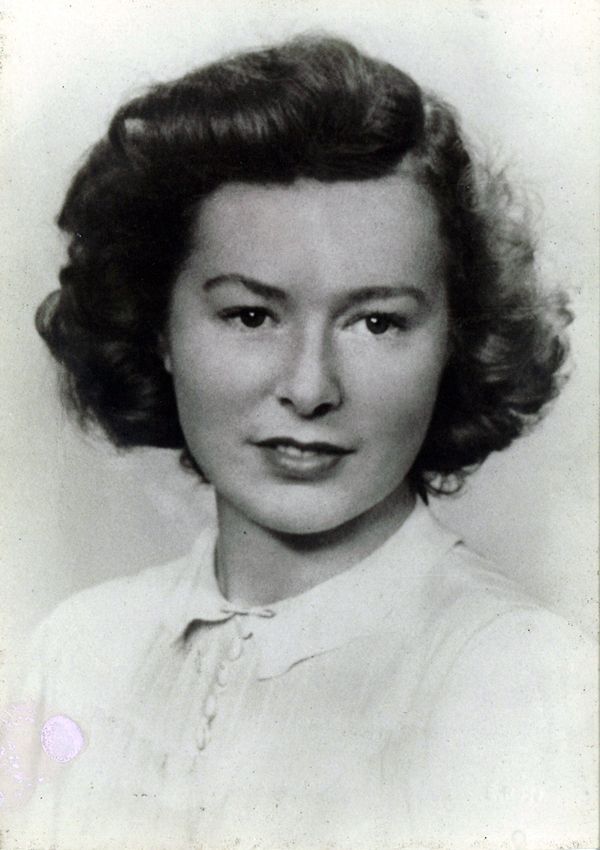
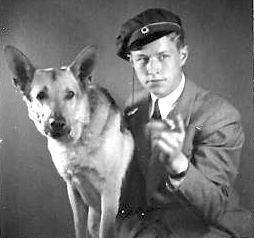
March 24, 1943. My dear little brother.
t's been 6 months since your last letter. It seems like forever. We live in expectation of your mail. My thoughts are always with you. Your absence never leaves us. We miss you a lot. We have an empty room that can not be occupied. As for me I'm fine. So why be unhappy ? It is a shitty life that we have, that human beings have built for us.
What is the use of all this pain and all these losses ? No need to tell you that I will fight to the last breath for our cause, this cause you know so well. Fight for everyone you love and die if you have to. This is the motto for which we live.
July 8, 1943. My dear little brother.
Not so long ago, about two months ago, I received a letter from my Swedish friend Tore, who met you. It was wonderful and amazing to hear from you. You know my intentions. We may meet soon. There are all kinds of problems here right now, you are well aware. I should have leave a long time ago, but there were some problems which stopped me. I'm so excited to see you again, I'm dizzy just thinking about it. You would not imagine the spring we had this year and if you had to make a trip to Riis you would be greeted at the garden gate by the crushing scent of jasmine. You will see how the espalier plum trees have grown to the living room window, so when the time comes, we will be able to simply reach out and pick. On the lawn, behind the house, the potatoes are already in bloom and you would be amazed at how much the garden has grown. It's a pleasure to watch everything grow and change every day. Now I am almost a professional gardener. Peas, beans and carrots grow well this year and cabbage, celery and leeks grow well where the compost was. We have something more in the garden since your last visit, a chicken coop with four cute little chicks. It's so much fun. In our rosebeds, now sprouts are growing and it looks a bit weird. On the other side of the fence we have something much less pleasant, the Germans screaming and shouting every time we appear in our garden. The house of the Haugens has been requisitioned. The house on the corner belonging to the doctor was also taken but was made free some time later. We were also in the shooting line and we were very worried but for now, we were left alone. Now enter the house. You know it's always so nice in the summer, when the whole house is open and the wind is playing with the curtains in the living room. There are flowers everywhere especially around your photos and daddy's picture otherwise nothing is changed since your departure I think that when you return, you will find mom changed. I think she has grown older since Dad's death. Jorgen helps a friend in his business, most of his workers are in jail or do forced labor for the occupier. Jorgen has not been called yet. My dear boy, you know that we always think of you. Mother and Agnes send you all their love. A thousand hugs and kisses from your little sister.
July 28, 1943. My very dear brother.
Now I have arrived here (Sweden), where most of our fellow citizens end, sooner or later. The circumstances made me leave, I got involved a little too deeply in an infiltration. Two days later I made the decision to leave. The living conditions at home are terrible. It has been going on for three long, very sad years. In this life, I have met fantastic people and I am happy with such solidarity between us. These people have given me the assurance that together we will overcome the difficulties that lie ahead. I was with Smit-Kielland today. But also with other people with whom there will be no problem to do something. My brain is constantly functioning and I admit I'm running out of sleep. This is my first day in Stockholm and I can say that we are very well welcome. It was awful to say goodbye to our mother. She has been so courageous, so brave all time long and I can not forget her tears on her face. Jorgen is good for us all. He expects to do something positive. He will not break the promise he made to father on his deathbed not to leave our mother. It is a terrible feeling of being an outlaw in one's own country. I had to steal to survive. Here in Stockholm, there is an overabundance of everything, milk, honey. In the streets you have lamps, shop windows are filled with all sorts of goods. Imagine this first day how I stuffed myself with cakes and chocolate. Here, it is the time of peace. People do not understand what is happening to us and ignore the situation in which Norway is. They just think we exaggerate when we describe terrible things. But the money does not last long here and I'm afraid it will not be easy. On this first day, I am greeted at Kjesaeter castle. It's a real experience. All refugees receive a wonderful welcome. This letter is a waste, my thoughts go in all directions and it is already midnight. I have a long day ahead of me tomorrow. I will have to run from one office to another to get a residence permit. Mother sends you her deepest love.
Jorgen and Agnes too. Apart from them, nobody knows my departure. Write me, please, either to the Royal Norwegian Legation, or to Mrs. Elin Hansson. I forgot to tell you that I sent you a telegram today. Take care of yourself and write to me as you can. A lot, a lot of love.
Erna
Jean Michel MARTIN. Daniel DAHIOT. Yves JOUAN. ABSA 39-45 - September 2013.
Thanks to :
- Mister John Corbett Milward for sending photos and family biographical material.
- Mrs Odette Buard, Mister Pierre Fleury, Mister Albert Olivier, Mrs Marie Le Ménager, Mister Joseph Jouffe, Mister Robert Buard.
- Mrs Hanne André Danielsen, Defense attaché at the Embassy of Norway in Paris
- Yves Jouan, member of ABSA 39-45, for the realization of the plans of the last minutes of flight.
- Mrs Véronique Le Sergent Veyrié for her traduction work.
- Mister David Tye, research and detection and Mister Colas for authorization to investigate the crash site.
- Mister Michel Monfort photographic retouching.
- Mister Vierron.
- Mrs Claudine Pigot for her kind permission to publish the sketch realized in 1942 by her aunt, Mrs. Yvonne Jean-Haffen, on the Kommandantur of Dinan located at 29 'rue de Brest'.
- Mrs Florence René, Department of Museums at the city of Dinan.
- Jean Marie Guillou (Mustang IA profile).
- To the website : 'Norwegian merchant fleet 39 45, Mrs Siri Lawson".
- Yannig Kerhousse for providing information on the German unit occupying the Trélivan airfield from July 1943.
- Mister Denis Laffont, author of the book 'The Summer of the Red Harvests' authorizing the publication of a photo of the Trélivan airfield.
- Mrs Sarah Dixon and Linda Jackson for the translation of the letters sent by the family.
Documents source : ORB N°168 Squadron RAF - Personal file of 2nd lieutenant von Tangen, Ministry of Defense, Air Historical Branch - N° 168 Squdron 1942-1945 - Phil H. Listemann
A big thank you to all the people met for the realization of this biography written in Memory of Lieutenant von TANGEN
COOLING CIRCUIT FOR MUSTANG Mk IA
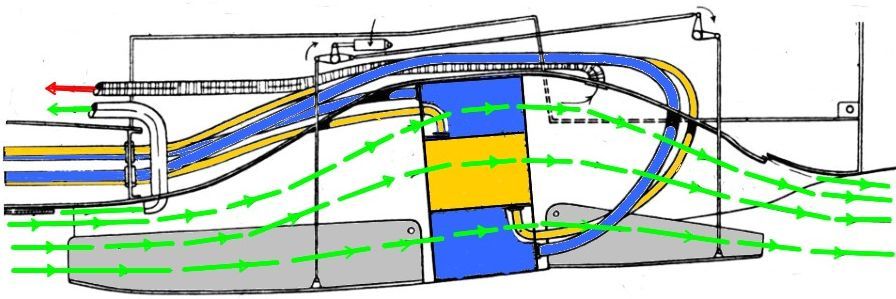
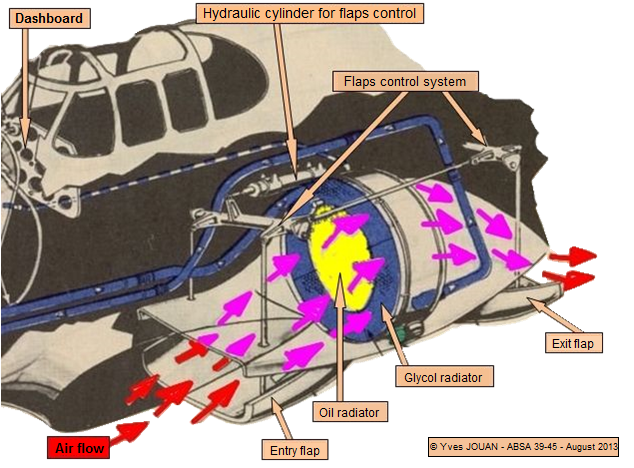
SOME PARTS OF MUSTANG Mk IA

Stainless steel holders found on site
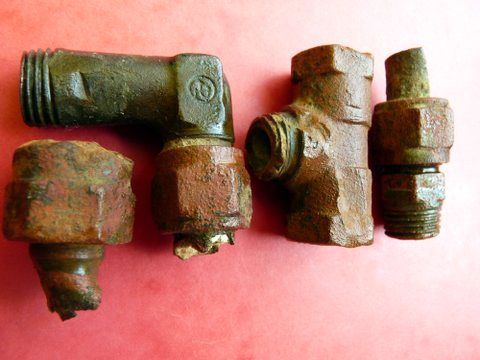
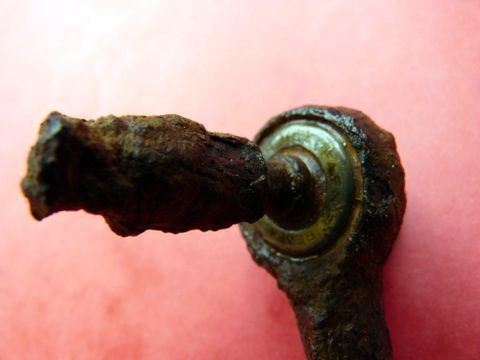

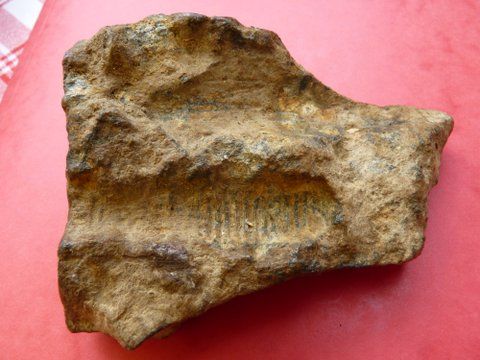
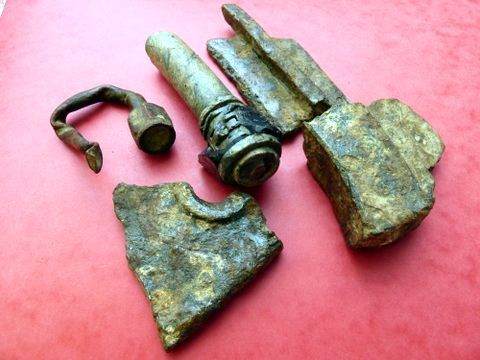
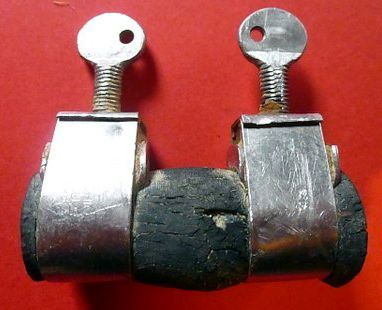
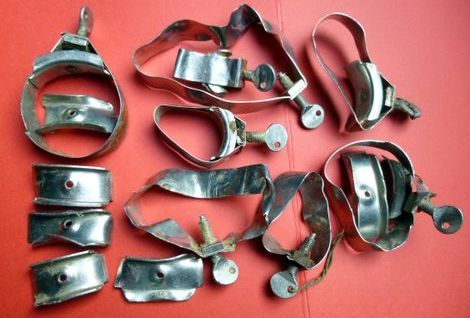
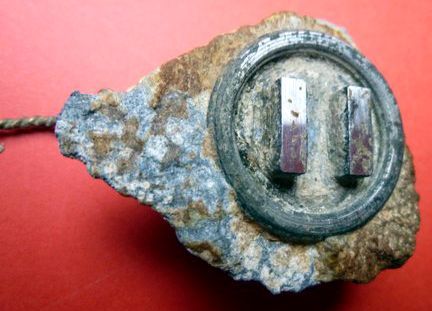
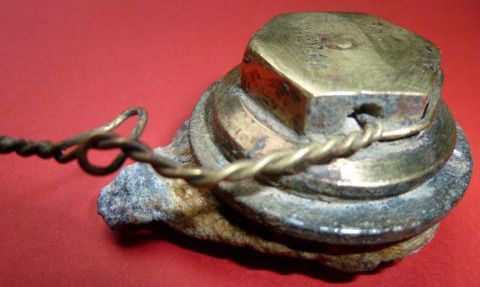
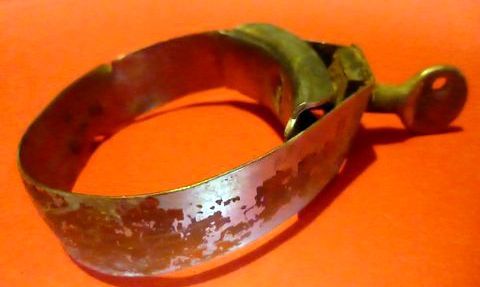
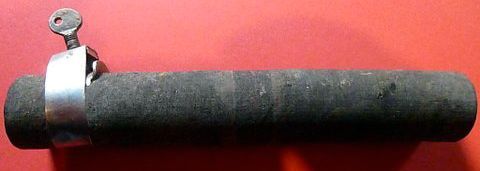
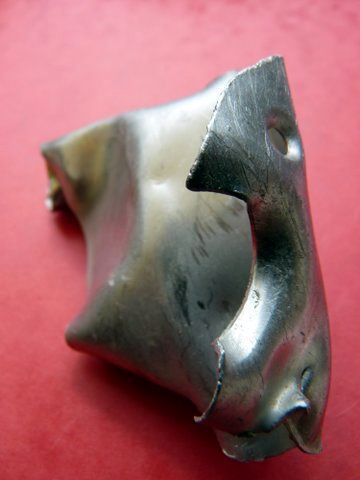
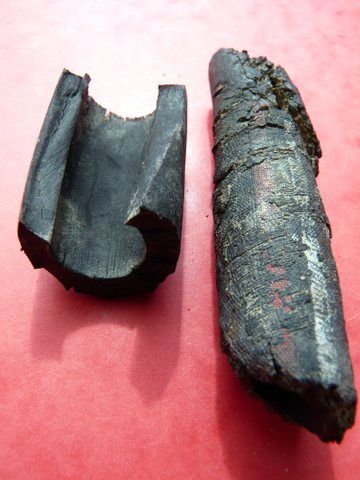
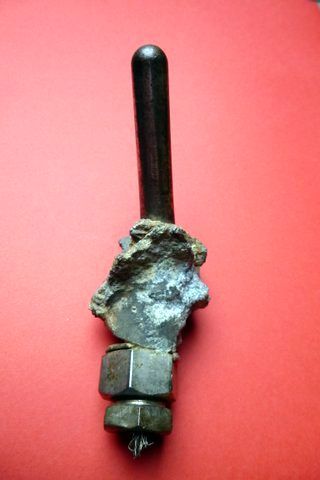
Sensors for engine temperature

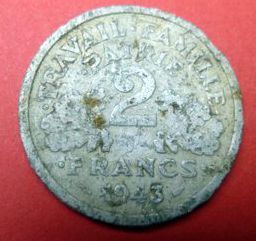
2 francs french coins dated 1943 found on crash site
BIOGRAPHY : JAN GERT VON TANGEN
Biographical information provided Mister John Corbet Milward, Mrs Kristin Corbet Milward, Mister Jorgen Von Tangen. Nephews and niece of Second Lieutenant Jan Gert Von Tangen.
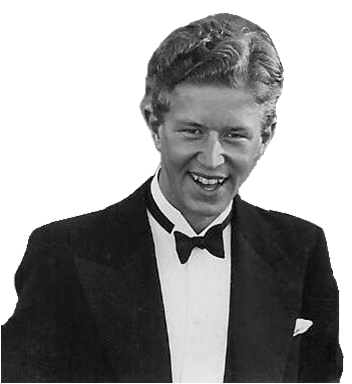
Jan Gert von TANGEN
My father Roger Corbet Milward was a pilot in the Fleet Air Arm-Royal Navy during the Second World War. He had fought on several fields of operations. He extended his service for a few years after this war. He was a graduate of the most famous flying school in the British Empire and was familiar with the performance criteria on various types of propeller aircrafts and post-war jet fighters. From family correspondence, I know that Jan Gert was appointed as non-commissioned officer during his training in Canada and that he has also become a fighter pilot after his tests.
Upon his arrival in England in 1943, on his return from Canada, he joined a squadron of the Royal Air Force based near London. Jan Gert was killed during his first operational mission in occupied territory on October 31, 1943 : a photographic reconnaissance mission during which he had to make photographs of important works, in preparation for the maritime invasion the following year. It should be noted that the leader of the mission reported that he had not encountered any anti-aircraft artillery fire.
The theory supported by my father, but lacking evidence, was that as a pilot, Jan Gert was not much experienced, especially since he was flying on a high performance aircraft. He said that perhaps, he was too busy when taking photos and could have flown too close to the ground, and he could have lost control of his aircraft. What I know is that my father did not try to find out more. He did not want to upset my mother and grandmother, both of whom were very affected by his death. In 1946, Jan Gert's mother traveled to France to retrieve her son's body and bury him in the family vault at the Oslo cemetery.
I must add that my grandfather disappeared at a relatively early age during the first part of the war. My other uncle, my cousin Jorgen's father, after being incarcerated and sentenced to death by the occupier, saved his life just in time. My mother arrested by the Gestapo, managed to escape to Sweden and then to the United Kingdom. In other words, my family members, at the end of the war, were eager to bury all this difficult past rather than looking for answers.
Why had Jan Gert lost his life during this flight ? Mrs Buard's testimony is very valuable to us. Jan Gert was born in 1917. He was the youngest child of Georges and Petra Von Tangen. Georges, our grandfather, had been raised in Paris where his Norwegian father, an expatriate, was in business. He was awarded the French Baccalaureate, then studied law at the University of Oslo, and after joined the Swedish Foreign Office. At that time Norway and Sweden were united. The independence of the two countries was proclaimed in 1905. Georges was then assigned to the Norwegian government, where he played an important role in the creation of the new Foreign Office. During World War I, he was a key Lend Lease government leader in the Norwegian fleet in the United Kingdom. He was able to conduct negotiations in French and in English.
My grandfather ended his career as secretary of cabinet, a job that consisted in being the private secretary of the king but also secretary of the government. Jan Gert was born in a rich house. He spent the beginning of his life in Bygdoy, a chic residential area in the suburb of Oslo, not far from the city center, before moving to a much larger family home in Trostrudvieen around 1925. Jan Gert completed his university education in 1936. He chose a career in commerce and spent some time in London and then in Oslo where he acquired the reputation of a guy a little daredevil and with a very good eye for pretty girls. He and his sister Erna were very connected. They spent a very happy holiday together with school friends in Nedre Nes, a large farmhouse not far from Oslo belonging to the Hvinden family. Nils Hvinden, the eldest, was a great friend of Jan Gert. Arndt, the second boy, was a pilot in the RAF and participated in the Battle of Britain. He was shot once but managed to escape. The youngest, Lasse Hvinden was Erna's "postman" in the Norwegian Resistance.
Jan Gert grew up in an international and liberal environment. There was a lot of comings and goings, both at his parents' house in Oslo but also at his family and his friends. Politics and economics were at the center of many conversations, especially during the upheavals of the interwar period. When Russia invaded Finland in 1939, Jan Gert responded to General Mannerheim's appeal. Shortly after, he was thanked by the Finnish state for his contribution. Hostilities ceased in 1940. On the very day of his return to Oslo, Germany invaded Norway. He returned to his regiment, participating in a few skirmishes north of Oslo to help slow the advance of German troops while awaiting the escape of the Norwegian Royal Family and the government leaving the country and heading to Britain aboard HMS Dorsetshire, taking with them the gold reserve of the central bank. Jan Gert escaped on a fishing boat across the North Sea to the United Kingdom in 1941. He quickly reached Muskoka near Toronto, Canada, which was the meeting point for thousands of young Norwegians wanting to serve in the Norwegian Air Force within the RAF. Some were destined to become pilots, other aviation mechanics. The group was led by the very charismatic officer Ole Reistad. Reistad recognized the Jan Gert experience acquired in Finland. He recognized his qualities as an orator. Shortly after, he was confirmed in flying and was named pilot. He had gotten '' his wings '' (patent) in 1942. Also in 1942, Jan Gert was sent to join the Norwegian diaspora living in the Midwest Minnesota in the US where he gave a speech very well received, a pragmatic speech urging to recover funds to save the country. In his approach, he was assisted by Reidstad, but also by a member of his family, Georg Vetlesen, to whom he would have given instructions for the Norwegian war effort. Erna, Jan Gert's sister, said that Reistad was so impressed by his personal and practical qualities that he could probably have been included in the Norwegian reconstruction commission after the end of the war. Unfortunately on Sunday October 31, 1943 Jan Gert met with a tragic destiny.
FLYING OFFICER DESMOND ALAN CLIFTON MOGG

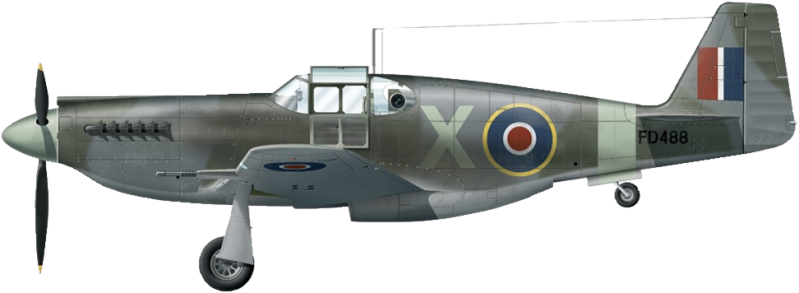
Mustang Mk IA FD488 flown by F/O Desmond Alan Clifton Mogg on October 31st, 1943
The Flying Officer Desmond Alan Clifton Mogg was born on September 7, 1915 at Chorley Woods in Hartfordshire County, 30 kilometers northwest of London. In 1940, due to the situation of his country, England, and the situation in Europe, like many of his young compatriots, he decided to join the Royal Air Force. In 1941, he reached the United States of America, finding several hundred RAF cadets, who arrived like him for a pilot training at the Darr Aero Tech base in Albany where he stayed from August 31 to November 4 1941.
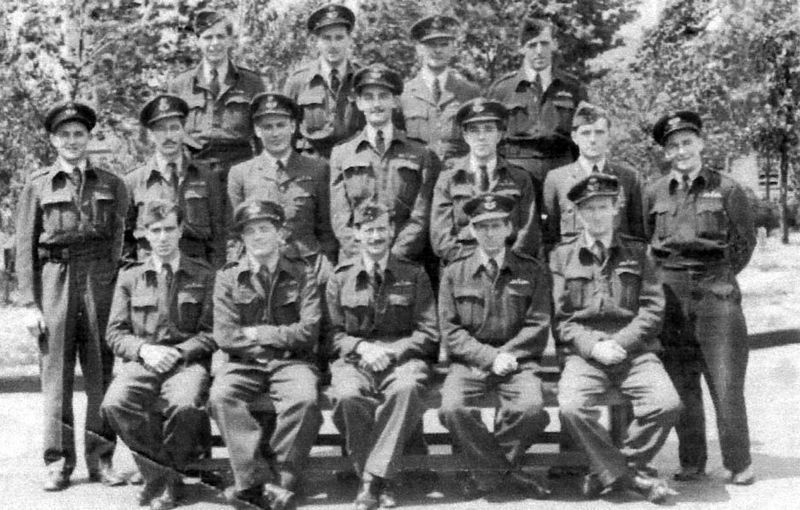
Flying Officer Desmond Alan Clifton Mogg is the second from the left in the middle row
He was then assigned to the USAC Training group. Training Center for pilots at Cochran Field in Macon, Georgia, USA. He remained there until January 10, 1942. He was then posted to the Dothan Advanced Training Group in Alabama where he graduated as a pilot on March 6, 1942. Twenty days later, he left the US where he had spent seven months in training. Back in England, he joined the 168 Squadron based in Bottisham near Cambridge. His commitment was total. He participated in many missions over the occupied territory. His state of service tells us about the many types of aircraft that he flew during the war and indicates that he flew 874 hours on combat missions.
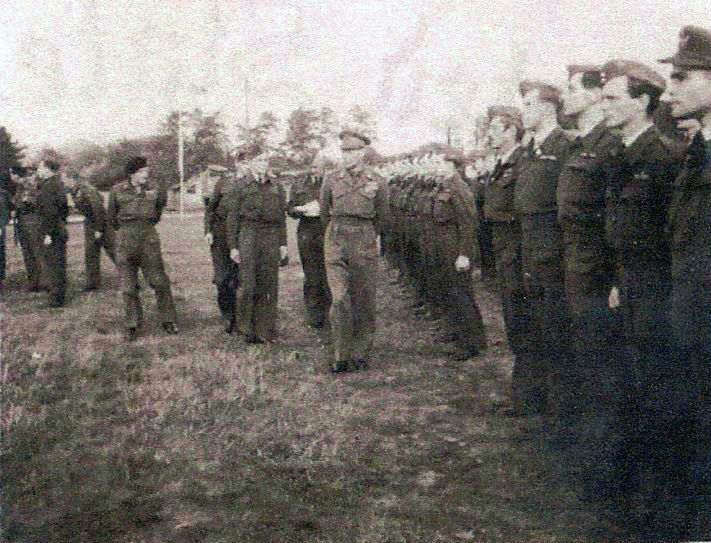
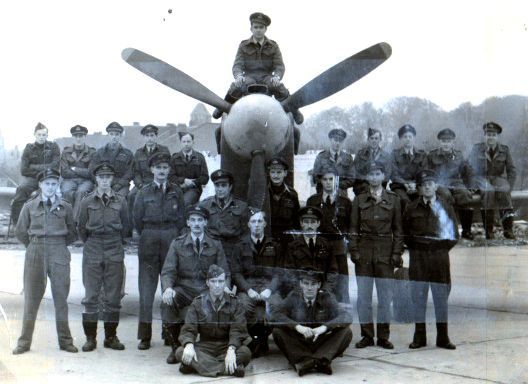
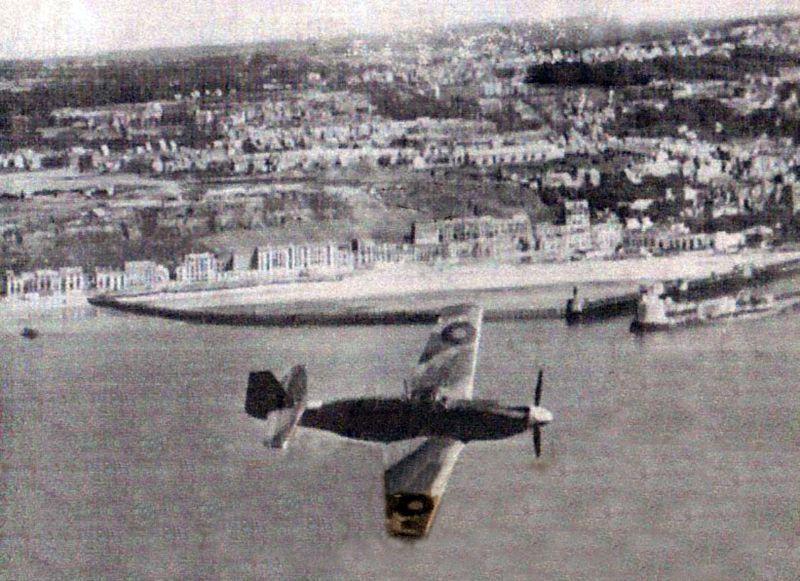
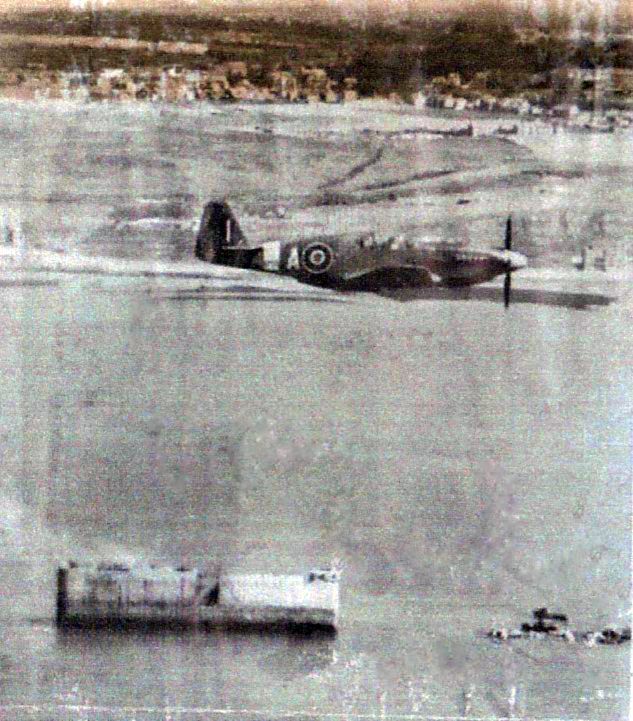
In front of Boulogne sur Mer, early 1944, the Mustang is flown by F / O Clifton Mogg.
In the photo above, he is the target of the Flak who tries to hit him.
We can see the flak fire on the left from an artillery-Träger ship.
On Sunday, October 31, 1943, he was the leader of a photographic reconnaissance mission "Poplar" over the region of Dinan in Brittany. His teammate and friend was Lieutenant Jan Gert von Tangen, Norwegian pilot in the RAF, like him. Von Tangen was operating his first mission over France, but had a tragic destiny. He was shot down by a Flak battery in the Dinan area and crashed aboard his Mustang aircraft in Saint Méloir des Bois.

In the military logbook of Flying officer Clifton Mogg on October 31, 1943, we find written in his own hand, '' Poplar near Saint Malo. Jan shot down by Flak ''. According to the circumstances, and due to the fact that his friend had not called him by radio before falling to the ground, and after research, it was deduced that this young Norwegian pilot had been a victim of the important German anti-aircraft defense.

Flying Officer Clifton Mogg died in Fulham in London in 2007 at the age of 92. He held the DFC Distinguished Flying Cross, a high honor for aviators, the Star Medal 1939-1945, the Air Crew Europe Star Medal and the War Medal 39-45.
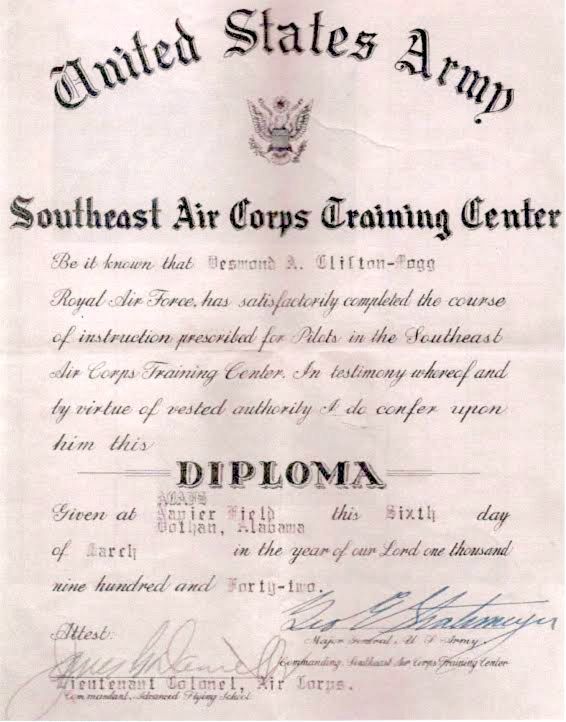
Many thanks to his daughter Candy, who sent us information and photos of her father.
Thank you to Bonnie & Clark Productions (Saint-Brieuc - Brittany)
IN THE PRESS
• Article of August 27, 2023 (Ouest France)

• Article of October 1st, 2013 (Ouest France)
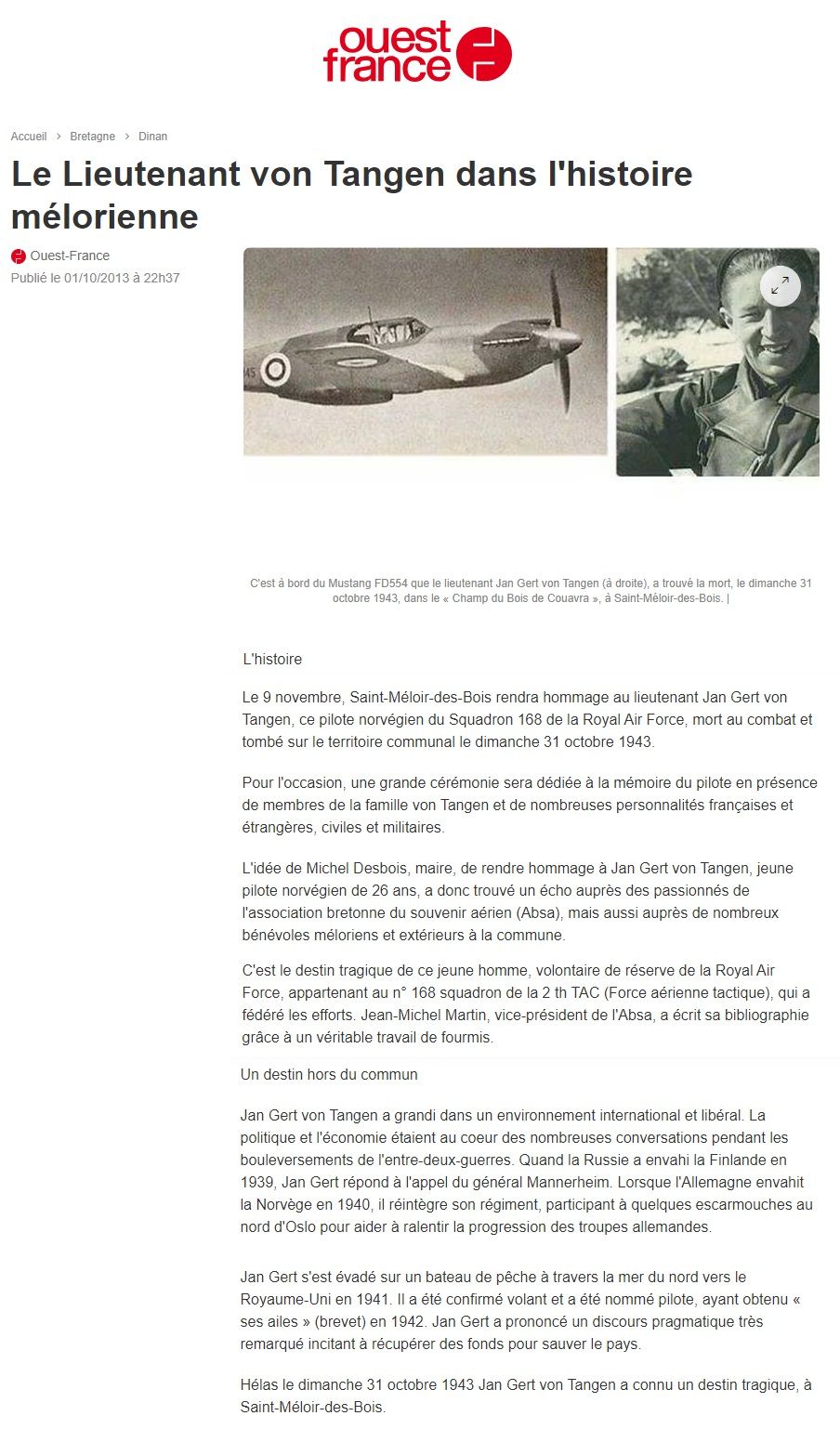

Ajouter un commentaire